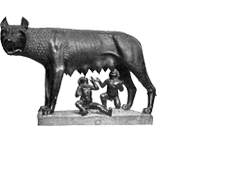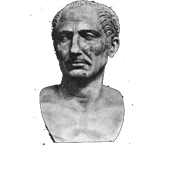
The Republic is the period of Roman history that extends from the end of the monarchy (509 BC) to the establishment of the Empire in 27 BC. Within that period, specific treatment is often given to the Social War (91-89 BC) and the currencies of its final stage, called Imperatorial or Pre-Imperial (49-27 BC). Alongside the oldest cast bronze emissions, around 300 BC, early coinages in silver began to circulate in southern Italy. However, the minting of silver coins in the workshops of the city of Rome did not start until the year 269 BC with the drachma of Hercules and the Capitoline wolf (Cr. 20/1). Silver coins circulated in small quantities until the introduction of quadrigatus and victoriatus. A few years later the denarius appeared (211 BC) which, over time, would become the coin of reference for Romans for more than four centuries.
More

The so-called Social War is the war that the Roman Republic fought against the other neighbouring towns in Italy, who were united in an alliance to demand participation in the benefits generated by the expansionist policy of Rome. The war took place between 91 and 89 BC and ended with the adoption of laws that extended Roman citizenship to virtually all the peoples of the peninsula. Although coins issued by the allies are not properly Roman coins, they usually appear in the collections of Republican currency. The majority were minted in silver and had a similar size and weight to the denarius, but without the characteristic bust of Rome on the obverse, which was replaced by the figure of Italy, emblem of the insurrectionists. The diversity of the legends on those denarii (some in Latin and others in Oscan) leads to the conclusion that the allies never had a central mint.
More

The final stage of the Republican period is that between the onset of the Civil War between Caesar and Pompey (49 BC) and the advent of the Principality and the Imperial Era (27 BC). Coins from this period are considered Pre-Imperial coinages and include the emissions of Pompey and his children, those of Julius Caesar, those of the tyrannicides (Brutus and Cassius) and the triumvirate (Antony, Octavian and Lepidus) and those of their supporters. In January 44 BC, Caesar took the unprecedented decision to put his own bust on the obverse of the coins. His murder came only a few months later, but that revolutionary innovation immediately became general and the precedent for what would be done afterwards by all his opponents and the Imperial mints. However, we must not forget that between 49 and 40 BC, these coins, minted mainly in mobile military workshops, coexisted with the Republican emissions of the Capitoline mint, whence also came, between 43 and 41 BC, a significant number of gold pieces.
More

This period begins with the appointment of Octavian as Emperor Caesar Augustus (27 BC). With some ups and downs, political and cultural unity of the Empire lasted until 395 AD, when it was divided into the Eastern Empire and the Western Empire. When Odoacer deposed Romulus Augustus (476 AD), the Senate sent the imperial insignia to Constantinople and the capitulation of the Western Empire was consummated. Imperial emissions in gold, silver and bronze are characterized by the representation of the bust of the Emperor or his family on the obverse. Depending on the needs and other circumstances at any given moment, the Roman monetary system underwent various modifications, particularly in the time of Augustus, Nero, Caracalla, Diocletian and Constantine.
More